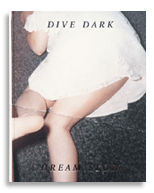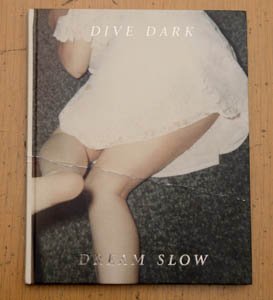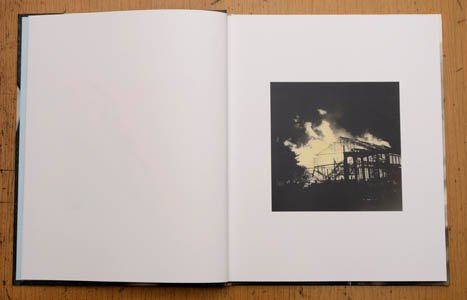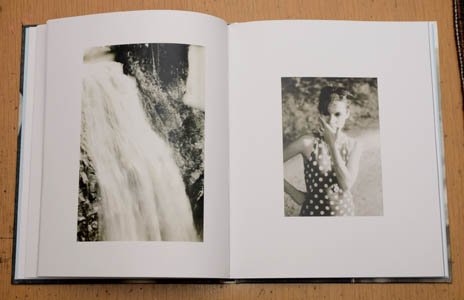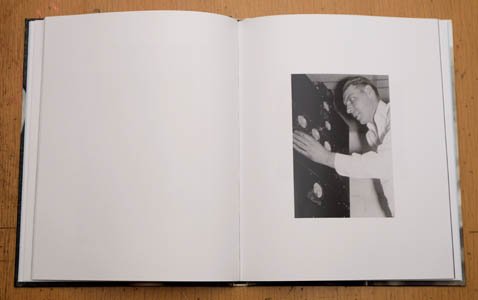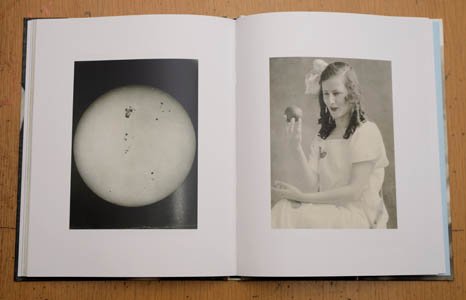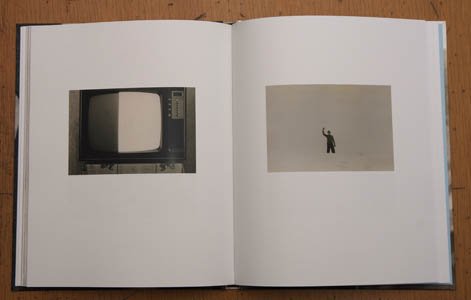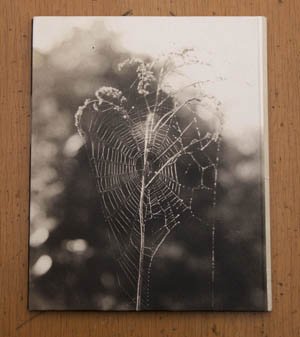Dive Dark Dream Slow
by Melissa Catanese
7.5 x 9.25 in., 88 pages, hardcover
The Ice Plant, 2012
$29.95
reviewed by Tim McLaughlin
The found photo is a strange beast.
It is a photo with one foot in the grave; redeemed (if that is the right word) through someone’s interest in it. Such a photo has been salvaged from the cardboard box at the flea market, from the album about to be discarded, or from the vast stacks of ephemera for sale in emporia both on and off-line. It is a photo that exists in two worlds at once: its original world, the world in which it was created by a photographer with intention (which may or may not explain the photo’s content) and its new world, in which it shall have new meaning, new context, and (depending on providence) another life entirely.
DIVE DARK DREAM SLOW is a second life for a number of photographs acquired by New York photography collector Peter J. Cohen. They have been curated and assembled by Melissa Catanese, who is both a photographer and a bookseller (She is the founder of Spaces Corners, an artist-run bookshop and project space located in Pittsburgh, PA.). Ms. Catanese has had long-term, hands-on access to the collection as she has been helping to edit and organize Cohen’s massive collection of more than twenty-thousand prints.
The volume is slim and elegant with a clean, minimalist layout. There is no text until the final page where, in addition to the copyright information, we encounter a paragraph by Albert Camus.
The book has gained traction since it’s release. It has been shortlisted for the Paris Photo-Aperture Foundation PhotoBook Awards in 2012, and despite Jonathan Blaustein’s rather peculiar review in APhotoEditor (which seemed more about his mid-life crisis than the book), it appears to be doing well – making a number of shortlists for best photobook of the year, and generally sparking interest.
The reason DIVE DARK DREAM SLOW is doing well could be that a book of this type has been expected for some time. A collection of found images organized, not by type – as are Martin Parr’s collection of boring postcards – but by letting the photographs resonate and interact with each other in the hopes of obtaining a lyric or poetic outcome. You can almost imagine the giddy delight at being let into Cohen’s collection of images with the idea of making a book of found photos.
And yet, as an organizational structure, the play of association between photos is a tall order. And I can’t entirely agree with the promotional prose found on the publisher’s web site that “the book cycles through overlapping themes and counter-themes—moon/ocean; violence/tenderness; innocence/experience; masks/nakedness—that sparkle with psychic longing and apocalyptic comedy.” Often (as with the mask) a single photo does not make a theme.
I also have two book-designer complaints. First, the image of a penciled caption from the back of a photo does not deserve a two-page spread. Moreover the gutter of the book makes reading the caption awkward. This gutter gets in the way with another two-page spread toward the front of the book where a man, who is supposed to be diving into an inner-tube, seems to be diving into the gutter instead. Certainly one can crack the spine and eliminate these problems. But a book lover would rather drown in rabbit hide glue than break the spine of a book.
Does the book work? If the reader is prepared to spend some time to interpret the harmonic interference of the images, I think it does. The interplay is subtle. After all, it’s not like there is a correct way to interpret these things. It is an easy book to dismiss out of hand, lacking both an auteur (who’s force of genius must certainly hold the work together) and a type (ahh they are all photographs of swimmers – now I understand). The book itself shares the same qualities as found photographs.
Commenting on a bequest by Mr. Cohen to the MoMA in 2010, a gift that included more than 250 individual photographs and several albums, Tasha Lutek, Cataloguer, Department of Photography said; “while these snapshots were selected by a curator’s eye, they are not unlike the ones we have at home stored in boxes and albums, or displayed on our office desks. Mostly portraits, the collection of posed and unposed photographs document sitters we do not know, but whose faces and personalities still seem familiar.”
Indeed, Dive Dark Dream Slow could have been culled from the collective photographic subconscious of western culture.
Originally posted on imageonpaper.com
